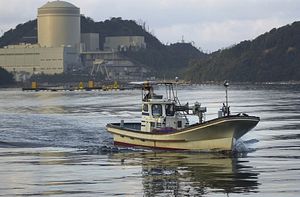Japan’s nuclear sector is undergoing intense scrutiny this summer as changes to the governing panel of the Nuclear Regulatory Authority (NRA) are underway, and nuclear energy suppliers go through the NRA’s inspection process in order to restart their reactors. Additionally, news of the government’s handling of the 2011 Fukushima Daiichi nuclear disaster, and the ongoing cleanup effort, are influencing the discourse on whether or not to speed up the restart Japan’s nuclear program.
On Tuesday, the lower house of the Diet approved two new commissioners for the five-member panel of the NRA, as two of its current commissioners will step down in September. One of the new commissioners, Satoru Tanaka, has proven controversial. A professor of nuclear engineering at Tokyo University, Tanaka is generally regarded as pro-nuclear, remarking eight months after the nuclear disaster that it could be safe to reconsider returning to nuclear energy. He has also, according to Reuters, accepted roughly $100,000 over the last 10 years from nuclear power companies and related sources (including Tepco Memorial Foundation, affiliated with the energy company responsible for the Fukushima Daiichi plant), a fact that has prompted the anti-nuclear lobby to question his ability to be objective. Industry analysts interviewed by Reuters maintained that most experts in Tanaka’s field would receive this type of funding, given the close relationship between Japanese academia and energy companies.
Tanaka will be filling one of the spots left vacant by Kazuhiko Shimazaki, who has been outspoken in his opposition to returning Japan to nuclear dependence. Shimazaki has been criticized for saying two reactors sit upon active fault lines, and effectively stopping the restart of a reactor with vigorous safety demands. He has yet to comment on his retirement, although some NRA officials had hoped he would remain.
With Japan’s nuclear power companies struggling to remain profitable with all of the country’s 48 reactors offline, two of them are pushing for their safety inspections with the NRA to either be implemented or finalized as soon as possible. Kansai Electric Power Co. (Kepco) said it might restart its reactors at its Oi power plant if it receives a positive safety inspection, despite losing a Fukui District Court ruling on the matter. Two reactors at Kyushu Electric’s Sendai plant, shortlisted by the NRA for safety checks, could come back online in a few months. Additionally, Tohoku Electric Power Co. is seeking inspections for reactors at two separate power plants. It has requested a safety screening at its No. 2 reactor at the Onagawa power plant in Miyagi Prefecture, and at the No. 1 reactor at its Higashidori plant in Aomori Prefecture, both located in the northeast of Japan’s main island of Honshu. Tohoku Electric has built a 3-meter-high seawall on a location 13 meters above sea level at the Higashidori location in hopes of restarting in March of 2016, yet the screening is unlikely to start while the presence of active fault lines beneath the reactor is being investigated, according to Jiji Press.
As the government and nuclear power companies attempt to quickly restart the country’s nuclear program, Tepco shareholders are requesting copies of interviews conducted by the Cabinet Secretariat in the hopes of investigated the cause of the Fukushima accident. According to the Asahi Shimbun, they are prepared to file a lawsuit against the government if their request is denied. The shareholders want access to interviews with 772 people in order to assess if there was a collapse in leadership following the disaster.
Meanwhile, cleanup efforts at the Fukushima Daiichi No. 1 reactor continue to flounder. Tepco’s advanced liquid processing system (ALPS), designed to reduce the levels of radioactive substances in the water used to cool the damaged reactor, only has one of three main channels in operation. The other two channels are offline until later this month after cloudy water was detected, caused by radiation exposure that had deteriorated packing gaps in the channels.
The government may be able to increase the tempo of nuclear reactor inspections, and possibly restarts, after the two new commissioners join the NRA this September. Both the administration of Prime Minister Shinzo Abe and nuclear energy companies are adamant that this happen, yet for different reasons. Abe is intent on driving down energy imports that are hurting Japan’s trade balance due to the weak yen. Japan’s energy companies are becoming desperate to restart reactors that could increase profits, especially before the energy market is scheduled to be deregulated in 2016 and they face stiffer competition. At the same time, Japanese consumers face a difficult choice between escalating energy prices and living with the uncertainty of another environmental disaster. The level of tension between the public, government, and energy industry will continue to dictate the pace of nuclear restarts. However, the return to a convergence of government policy with the interests of nuclear power companies will accelerate the process.

































